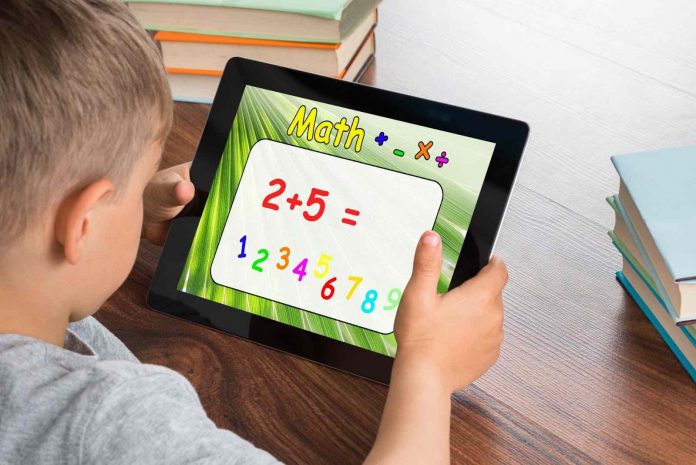Imagine a math class where technology isn’t just a tool for solving problems but a gateway to a world of interactive learning and exploration. A study highlighted by Edutopia reveals a fascinating shift in how technology is reshaping math education. It’s not just about having the latest gadgets or apps; it’s about how technology in the math classroom can transform the very nature of learning mathematics.
SplashLearn: Most Comprehensive Learning Program for PreK-5

SplashLearn inspires lifelong curiosity with its game-based PreK-5 learning program loved by over 40 million children. With over 4,000 fun games and activities, it’s the perfect balance of learning and play for your little one.
Try for freeGone are the days when technology in education was a luxury, accessible only to a few. Today, it’s a dynamic part of classrooms, bridging gaps and opening new horizons. However, this evolution brings its own challenges. The 2017 National Education Technology Plan points out a new digital divide – students often use technology for passive learning, missing out on active, engaging experiences that foster real understanding and problem-solving skills.
In this blog, we’ll dive into how technology, when used strategically, can turn math classes into hubs of active learning and creativity. From interactive whiteboards to digital assistants, we’re on a journey to discover how technology can make math not just a subject to learn but a world to explore.
How to Use Technology in the Math Classroom- 9 Effective Ways
1. Online Math Games and Apps
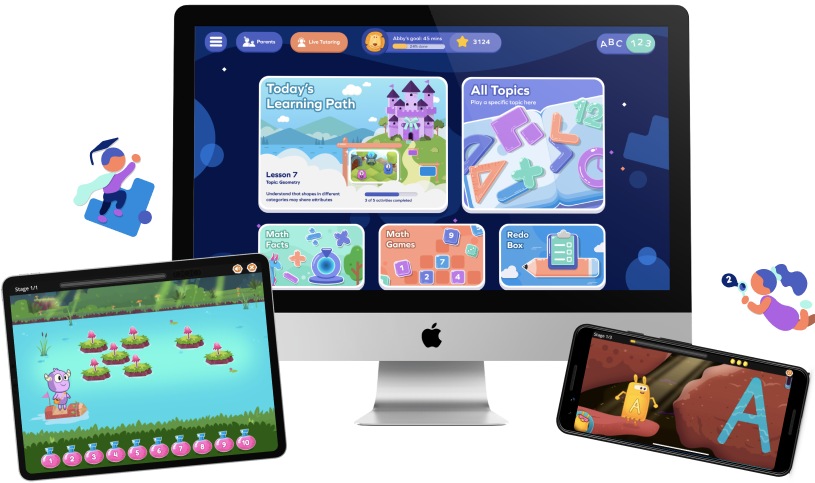
The use of online math games and apps in education is a fun and effective way to reinforce math skills. These platforms turn learning into an exciting challenge with levels, scores, and instant feedback. They cater to various abilities and topics, making math accessible and enjoyable for students of all ages. The benefits are clear: increased motivation, enhanced problem-solving skills, and a playful approach to learning that keeps students engaged.
Related Reading: Best Math Teaching Apps for Teachers
2. Interactive Whiteboards
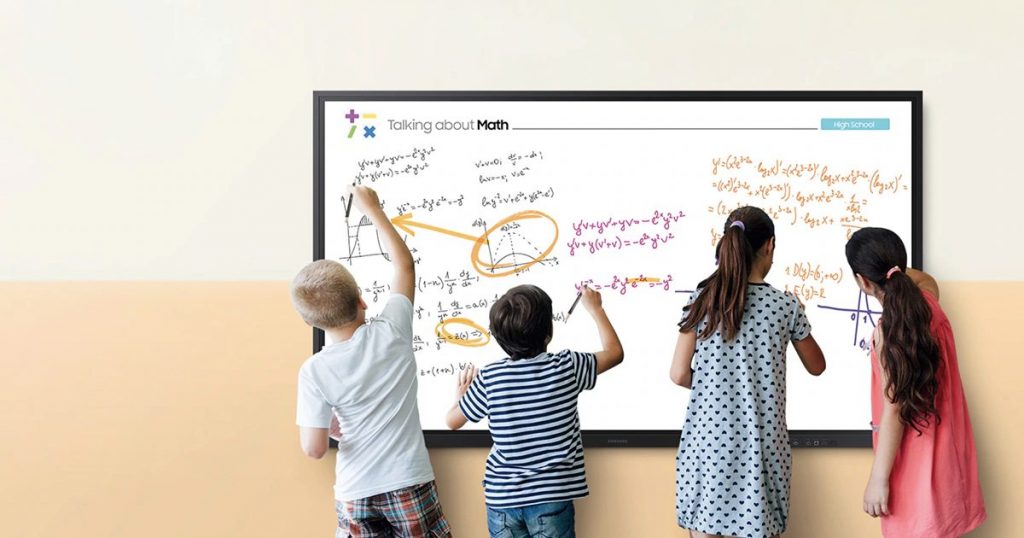
Interactive whiteboards have revolutionized the traditional blackboard experience. These dynamic screens allow teachers to display interactive lessons, where students can come up and solve problems directly on the board. This hands-on approach makes learning more dynamic and engaging, turning a passive classroom into an interactive learning environment. It’s a visual and tactile method that caters to different learning styles, making complex math concepts easier to grasp.
Related Reading: Best Essential Classroom Management Tools for Teachers
3. Math Video Tutorials
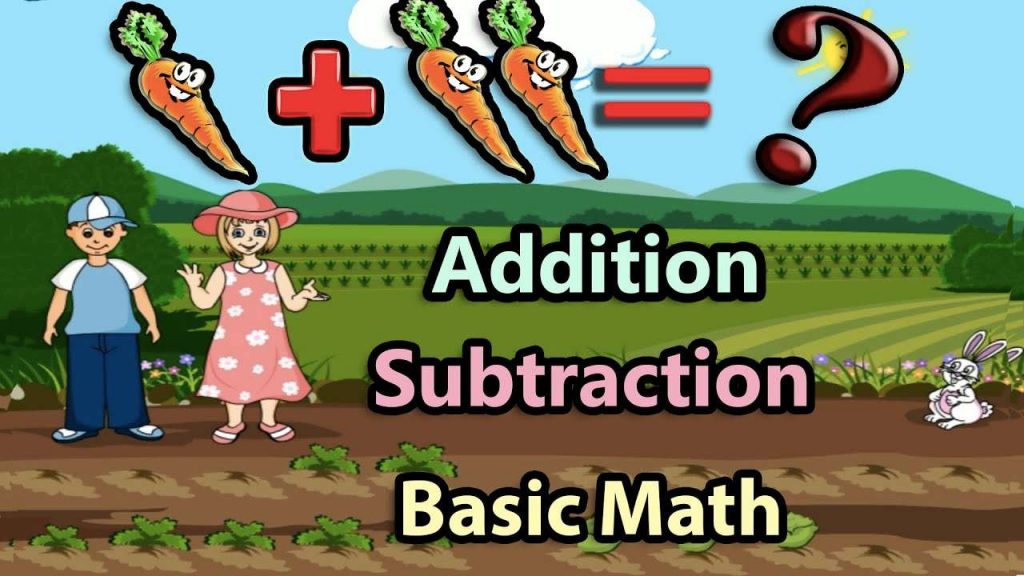
Video tutorials have become an invaluable supplement to traditional math teaching methods. They offer step-by-step explanations of math concepts, which students can watch at their own pace, pause, or replay as needed. This resource is especially helpful for visual learners and those needing extra time to understand new concepts. Math video tutorials can bridge gaps in understanding, provide alternative explanations, and serve as a valuable revision tool.
4. Online Assessment Tools
Online Assessment Tools are a transformative element in modern education, especially in mathematics. Platforms like SplashLearn offer a comprehensive environment where teachers can assign assignments and manage tests. These tools enable educators to track each student’s progress in real time, providing valuable insights into their strengths and areas needing improvement. Additionally, SplashLearn facilitates seamless communication with parents by sharing detailed progress reports. This feature is crucial for identifying specific areas where students may require extra attention or support, fostering a collaborative effort between teachers and parents in the student’s educational journey.
5. Data Analysis Tools
In a world increasingly driven by data, incorporating data analysis tools in math education is crucial. These tools help students understand and interpret complex data sets, teaching them to draw meaningful conclusions from raw data. This enhances their math skills and prepares them for real-world scenarios where data analysis is key. Using these tools, students learn to approach problems logically and develop critical thinking skills essential in many fields.
Related Reading: Best Educational Kids Shows to Watch
6. Get A Digital Assistant

Digital assistants are new ways to learn math, offering personalized help and guidance. These AI-driven tools can answer questions, explain, and offer practice problems tailored to each student’s needs. They’re like having a personal tutor available 24/7, ensuring students can get help whenever needed. This approach makes learning more flexible and responsive, adapting to each student’s learning pace and style.
7. Virtual Field Trips

Virtual field trips are an exciting way of integrating technology in the math classroom. They allow students to explore math in real-world contexts, making abstract concepts concrete and relatable. For instance, a virtual trip to a historical site can include calculating areas and volumes of ancient structures, offering a practical application of geometry. These experiences enrich students’ understanding and appreciation of math, showing its relevance in everyday life.
Related Reading: Best Virtual Learning Tools for Kids and Teachers
8. Bring In New Facilitators To Your Classroom

Technology opens the door to teaching math with technology by bringing external experts and facilitators into the classroom. Through video conferencing and online workshops, students can interact with mathematicians, engineers, and other professionals, gaining insights into how math is used in various fields. This exposure broadens their understanding and can inspire them to pursue careers in STEM fields.
Related Reading: Best Classroom Management Strategies for An Orderly Class
9. Online Collaborative Platforms
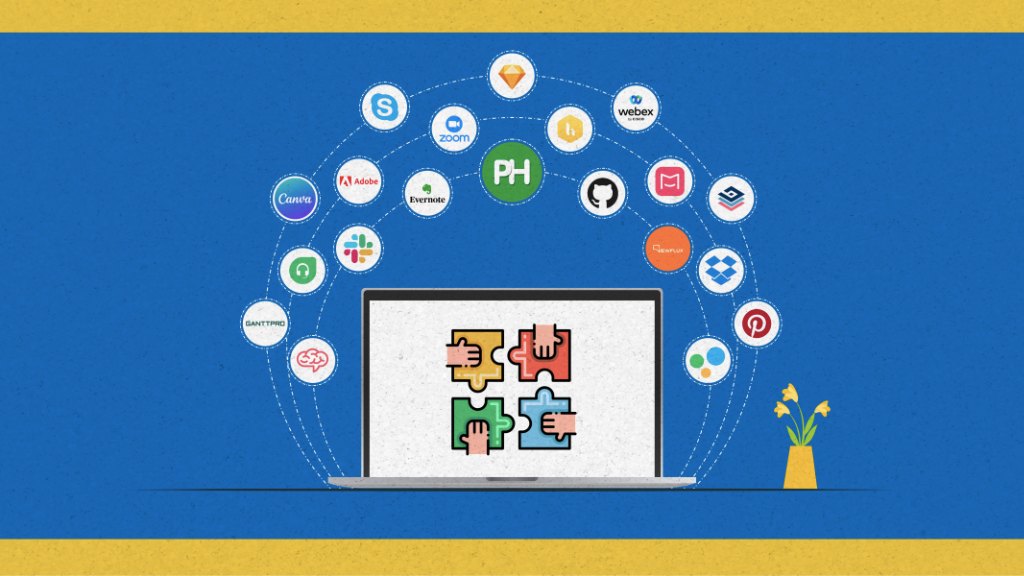
Online collaborative platforms are essential in using technology to teach mathematics effectively. These platforms enable students to collaborate on projects, share ideas, and solve problems collectively, regardless of their physical location. This approach enhances their math skills and teaches them valuable teamwork and communication skills. It encourages a collaborative learning environment where students can learn from and support each other.
Related Reading: Best Teaching Tools to Use for Uplifting Classroom
Why Should Teachers Use Technology in Math Class
1. Enhanced Engagement and Interaction: Technology in math introduces a new way of teaching math that captivates students’ attention far more than traditional methods. Interactive tools like digital whiteboards and math games turn abstract concepts into tangible, engaging experiences. This approach makes learning more enjoyable and helps students easily grasp complex ideas.
2. Personalized Learning Experiences: Every student learns differently, and math technology in the classroom allows for this individuality. Adaptive learning software can tailor problems to each student’s skill level, ensuring everyone progresses at their own pace. This personalization ensures that no student is left behind and each finds their path to understanding and success.
3. Access to a Wealth of Resources: The internet is a treasure trove of educational resources, and technology in the classroom opens this vault. From instructional videos to a vast array of practice problems, students have everything they need at their fingertips. This abundance of resources ensures that learning doesn’t stop at the classroom door but continues wherever the student goes.
4. Fosters Collaboration and Communication: Technology isn’t just about working with machines; it’s also about connecting with people. Online collaborative platforms allow students to work together on math problems, share ideas, and learn from each other. This collaboration fosters a sense of community and improves communication skills, preparing students for the collaborative nature of the modern workplace.
5. Immediate Feedback and Assessment: One of the most significant advantages of technology in math is the ability to provide instant feedback. Whether it’s through online quizzes or interactive problem-solving sessions, students can immediately see where they went wrong and learn from their mistakes. This immediate response helps keep students on track. It accelerates their learning process.
Conclusion
In conclusion, integrating technology in math education opens up a world of possibilities, making learning more engaging, personalized, and effective. Tools like SplashLearn and other digital resources are not just enhancing the way math is taught and learned; they are reshaping the educational landscape, preparing students for a future where technology and mathematics go hand in hand.
Related Reading: Best Math Manipulatives To Enhance Children's Learning
Frequently Asked Questions (FAQs)
How does technology make math education more effective?
Technology enhances math education by providing interactive and personalized learning experiences. It allows immediate feedback and access to a wide range of resources, making learning more engaging and tailored to individual student needs.
Can technology in math classes help students who struggle with traditional methods?
Yes, technology can significantly aid students who find traditional methods challenging. Interactive tools and personalized learning paths cater to different learning styles, making math more accessible and understandable for every student.
Are there any downsides to using technology in math education?
While technology offers numerous benefits, over-reliance can lead to reduced basic math skills and face-to-face interaction. It’s important to balance technology with traditional teaching methods to ensure a well-rounded math education.


